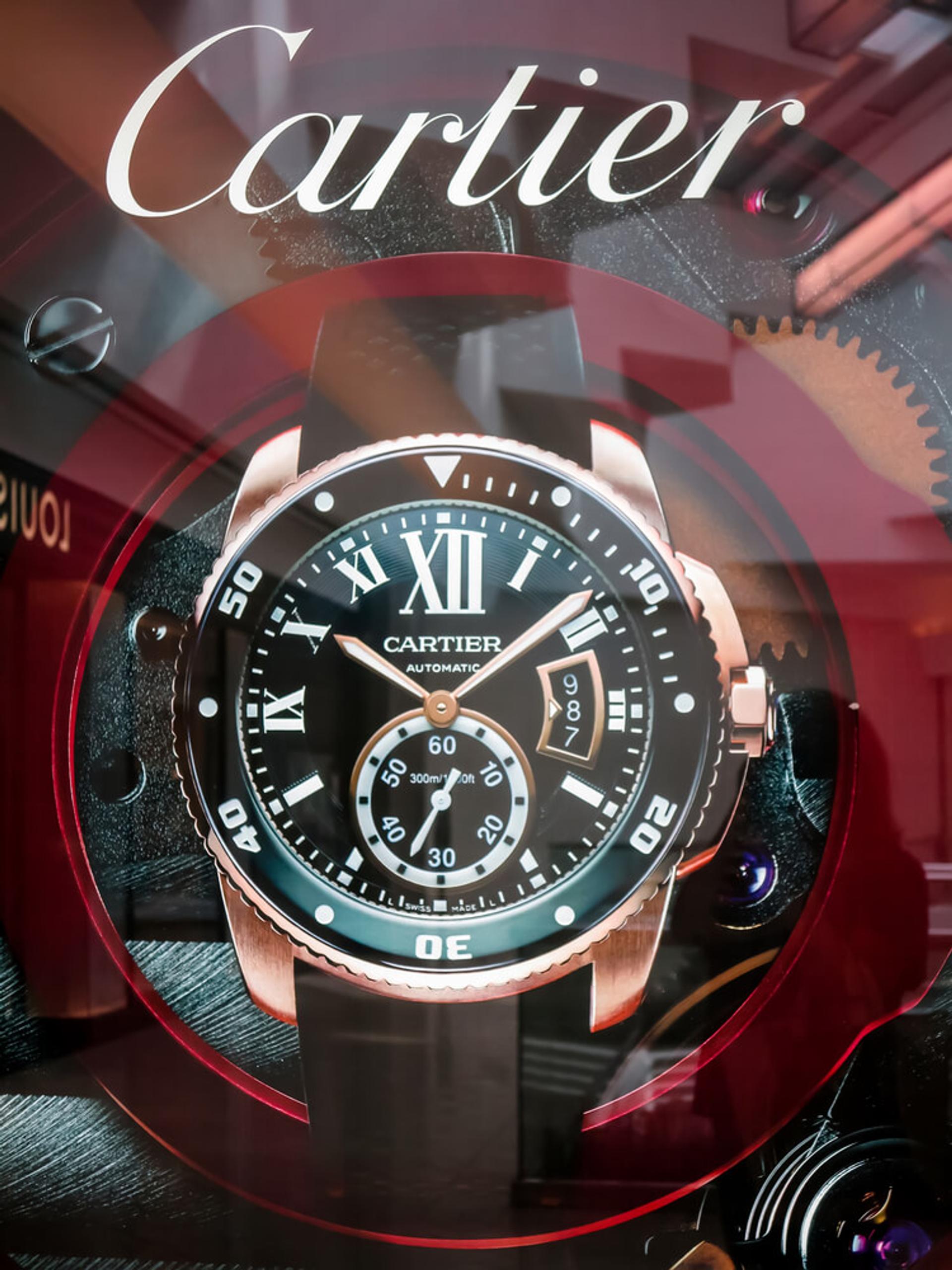The Story Behind Cartier Watches
Blossoming from a small family business to a worldwide authority in luxuriant stone jewellery and intricate horological pieces, the Cartier brand has extraordinary origins.
19th December 2022

The jeweller of kings
Blossoming from a small family business to a worldwide authority in luxuriant stone jewellery and intricate horological pieces, the Cartier brand has extraordinary origins.
Now known internationally for its prestige and popularity amongst the rich and famous, its roots trace back to a workshop in Paris in 1847.
Expert craftsmanship, revolutionary designs, and a preoccupation with a delicate, refined appearance always characterised its humble history. Cartier’s excellence became quickly noticed and before long the brand had developed long-standing links to royalty.
Fittingly, the phrase strongly affiliated with Cartier, ‘the jeweller of kings and the king of jewellers’, was coined by devoted customer King Edward V11 himself.
Cartier always maintained its authenticity, and the founder Louis-Francois Cartier is credited with some of the most popular and innovative designs, such as the Mystery Clock, termed to honour its transparent dial.
Louis-Francois spent the last part of the 19th century forging the elegant, art-deco personality that distinguished the pocket watches and mechanical necklaces of early Cartier.
But it was his grandsons, Louis, Pierre, and Jacques Cartier who captained the ascend to global takeover that saw the brand introduce the world to the first modern wristwatch.
Cartier’s iconic watches throughout the decades
The Santos
Perhaps Cartier’s first claim to international notoriety can be traced back to 1904, when Louis Cartier regarded his friend, Alberto Santos-Dumont, complaining of the impracticality of using a pocket watch whilst piloting.
This inspired the creation of the Santos, manufactured to be flatter than usual, with a distinctive square military-like bezel that best-suited aviation.
This is the only example of the brand naming a piece after its original target wearer and is still incredibly valuable today as a prized vintage Cartier timepiece.
The Tank
Thirteen years later in 1917, Cartier debuted the Tank. The watch was influenced by cutting-edge advances in tank engineering as seen on the Western Front during World War 1.
Its roman numerals, strict lines and proportions mirror those used in the designs for the newly introduced Renault tanks.
1920s
The swinging twenties saw further expansion for Cartier. It was during this decade when Edward Jaeger started working with the company and sales truly began to skyrocket.
The brand secured a location in New Bond Street address in London, where it is still there today. This was also the era that saw reference numbers introduced as accessories to every Cartier watch.
It is clear that by this point, Cartier had reached a level of prominence and prestige whereby preemptive measures against fakes were now necessary.
This iconic example of Cartier craftsmanship shows how the history of the company reflects wider world historical events and how each timepiece tells an important story.
Change of ownership
The death of Pierre in 1964 led to the auction of the family business. By the early 1970s, Cartier was being managed by a group of investors headed by Joseph Kanoui.
From this point, Cartier soared internationally in even more ways, with connections to contemporary artists around the globe.
The full splendour of Cartier’s pieces featured in heritage museums in St Petersburg, toured its own antique collection across Asia, and held an unprecedented exhibition in Switzerland where it celebrated its 150-year history.
Cartier continues to draw inspiration from a legion of cultures across the world.
Contemporary Cartier
Representing the height of Horlogerie, the beauty, creativity, and quality of Cartier goods are renowned to this day.
Unsurprisingly, they remain especially popular amongst image-conscious celebrities.
Hollywood's Jake Gyllenhall has been recently crowned the figurehead of the latest Santos model, and Rami Makel held out a hand adorned with the Tank watch whilst he received the Best Actor award at the Oscars.
Much like King Edward V11, modern royalty continues to favour Cartier. Britain’s future queen, Kate Middleton, showcases her own Cartier Ballon Bleu, and the beloved Princess of Wales often decorated her wrist with several editions of The Tank model.
How can you tell if a Cartier watch is real?
Cartier’s evident desirability inevitably leads to a counterfeit market, but there are certain signs that should arouse suspicion in you.
The weight of your Cartier watch is one of the more immediately noticeable aspects since the quality of the materials means it should be fairly heavy to lift. Of course, this alone isn’t definite proof of fabrication, so it's best to cross reference this with any of these other potential signs.
You should be able to find an intricate inscription of the brand name behind the back case of the watch. If this appears to be properly engraved and spelled correctly then you’ve likely got hold of the real deal.
Finally, your watch should have a reference number unique to itself.
Find out more about spotting a fake Cartier watch.
Sell your Cartier watch with Panache
For assistance in selling your Cartier watch, or to simply learn more about the history of this enticing industry, Panache has expert staff well-versed on the trends of the luxury watch market.
Based in Birmingham’s Jewellery Quarter, Panache offers a free, no-obligation valuation that will help bring the history of your timepiece to life.
Sell your watch with Panache today!
Sell Your Cartier Watch.
Selling your pre-owned watch has never been easier. Simply fill in our online valuation form to receive your free, no-obligation quote today.